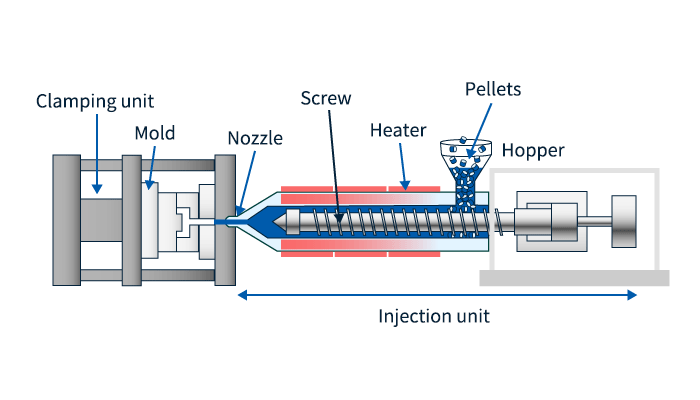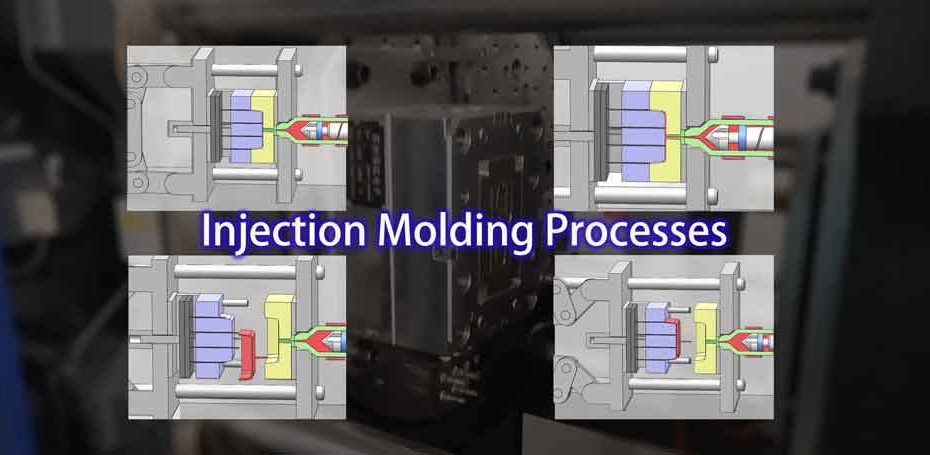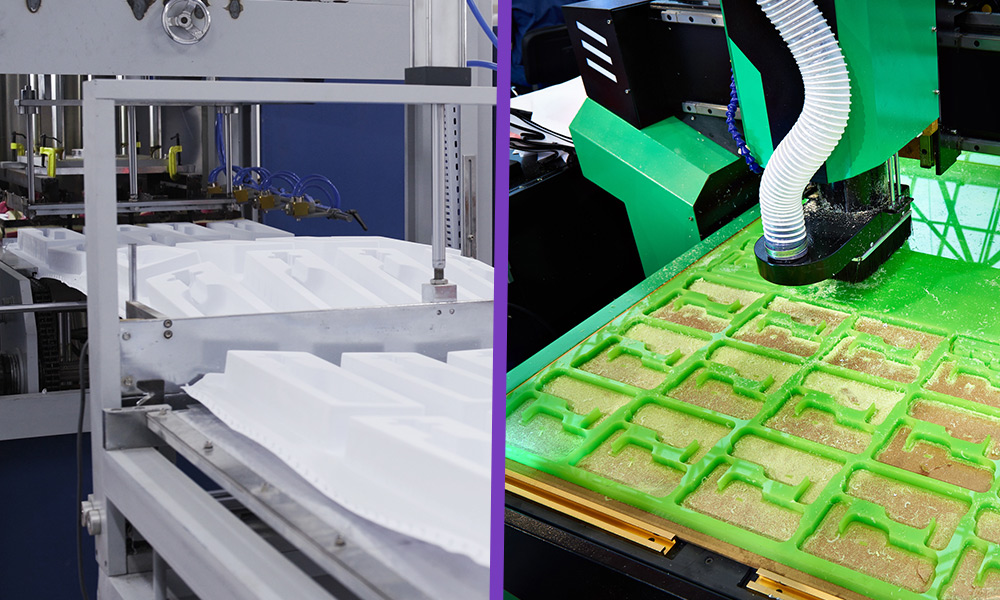How Plastic Injection Molding Drives Efficiency in Mass Production
How Plastic Injection Molding Drives Efficiency in Mass Production
Blog Article
The Future of Plastic Shot Molding: Technologies and fads to See
As the plastic shot molding industry evolves, a number of essential fads are arising that assurance to reshape its landscape. Automation and smart production techniques are established to boost performance, while the change in the direction of sustainable materials shows a growing environmental consciousness. Advancements in 3D printing are paving the way for unprecedented style flexibility. Nevertheless, these developments also come up with challenges that require careful factor to consider. Recognizing how these components will certainly connect and influence future techniques is crucial for stakeholders seeking to navigate this transformative period successfully.
Automation and Smart Production
As the plastic shot molding sector evolves, automation and wise manufacturing are taking spotlight, transforming manufacturing processes - Plastic Injection Molding. The combination of innovative modern technologies such as robotics, IoT (Net of Points), and fabricated knowledge is enabling producers to improve effectiveness, decrease functional costs, and improve product top quality. Automated systems streamline operations, reducing hand-operated intervention and raising throughput, which is essential in fulfilling the increasing demand for rapid manufacturing cycles
Smart making technologies facilitate real-time monitoring and information evaluation, enabling business to optimize machine performance and forecast maintenance needs. This positive technique not only decreases downtime yet additionally extends the life-span of tools. The use of joint robots, or cobots, improves the adaptability of production lines, enabling workers and equipments to run side by side safely and successfully.
The fostering of automation in plastic shot molding is not just a trend however a strategic critical for companies aiming to stay affordable in a global market. By harnessing these innovations, makers can attain greater accuracy, lower waste, and adapt promptly to transforming consumer demands, placing themselves for lasting development in a significantly computerized future.
Lasting Materials and Practices
The push towards automation and clever production has actually led the way for a higher emphasis on lasting materials and techniques within the plastic injection molding industry. Firms are significantly looking for green choices to traditional petroleum-based plastics, resulting in the fostering of recycled and bio-based materials. These lasting products not only reduce environmental effect but also line up with customer demand for greener products.

Furthermore, cooperation in between manufacturers, product distributors, and environmental companies is promoting development in the growth of lasting products that satisfy performance requirements without compromising quality. As regulations around plastic use become more stringent, the market is poised to adapt by welcoming these sustainable methods, making sure long-lasting practicality and decreasing reliance on non-renewable resources. The assimilation of sustainability into plastic injection molding is not just a pattern; it is becoming an essential component of business obligation and operational quality.
Developments in 3D Printing
Current improvements in 3D printing technology are significantly changing the landscape of plastic injection molding. Impossible or once challenging to attain with traditional techniques, the integration of additive manufacturing processes allows for the fast prototyping of intricate geometries that were. This capability not only speeds up item growth cycles however likewise minimizes material waste, aligning with the growing demand for sustainable production methods
Moreover, the appearance of hybrid production techniques, which why not find out more integrate 3D printing and injection molding, uses manufacturers the capability to create complex layouts while preserving the performance of mass production. This technique enables the production of tailored parts tailored to details customer demands without giving up the speed and scalability More about the author that injection molding supplies.
In addition, developments in products, such as high-performance polymers and compounds specifically created for 3D printing, are boosting the functional capabilities of published parts. These products can endure higher anxiety and show improved thermal residential properties, making them ideal for more demanding applications.
As 3D printing continues to develop, its assimilation right into plastic injection molding procedures guarantees to boost performance, reduce expenses, and foster development in item layout, positioning suppliers to better satisfy the difficulties of an open market.
Information Analytics and IoT Integration
Data analytics and the integration of the Internet of Things (IoT) are transforming plastic injection molding by offering makers with unmatched insights into their operations. By leveraging real-time data collected click resources from interconnected machines and sensors, manufacturers can monitor efficiency metrics, recognize inadequacies, and maximize manufacturing processes. This data-driven method helps with predictive upkeep, lowering downtime and expanding devices lifespan.
Furthermore, IoT integration permits for boosted quality assurance. By constantly tracking variables such as temperature, stress, and cycle times, suppliers can quickly find discrepancies from established criteria and make modifications in real time. This not just enhances product uniformity but additionally minimizes waste and scrap rates.
The blend of data analytics and IoT modern technologies likewise empowers makers to adopt even more nimble manufacturing techniques. With accessibility to extensive information analytics, organizations can react to market demands with better flexibility, readjusting production routines and configurations as needed. This flexibility is vital in a swiftly altering production landscape.

Personalization and Layout Adaptability
Just how can personalization and style flexibility boost the competition of plastic injection molding? Customization permits makers to meet specific customer requirements, accommodating one-of-a-kind dimensions, shapes, and capabilities that conventional products might not satisfy.
Advancements in layout innovations, such as computer-aided design (CAD) and fast prototyping, further strengthen this pattern. These tools allow designers to develop complex patterns and complicated geometries, which can be effortlessly incorporated into the manufacturing process. Consequently, suppliers can respond quickly to altering customer preferences and market needs.
Additionally, the application of modular tooling systems boosts design adaptability, enabling quicker adjustments in between different product layouts without considerable downtime. This flexibility can lead to reduced preparations and reduced production costs, making business a lot more nimble and affordable. Inevitably, welcoming modification and layout adaptability in plastic injection molding not just elevates item offerings however also enhances market positioning in an ever-evolving landscape.
Conclusion
The future of plastic shot molding is defined by significant innovations in automation, lasting practices, and cutting-edge materials. The assimilation of IoT and information analytics will improve operational effectiveness and predictive maintenance. In addition, the fostering of bio-based and recycled materials, together with development in 3D printing, will cultivate sustainability within the industry. Customization through modular tooling and rapid prototyping will make it possible for producers to continue to be responsive and competitive to the dynamic demands of the market.

The future of plastic injection molding is characterized by substantial developments in automation, lasting techniques, and ingenious products.
Report this page